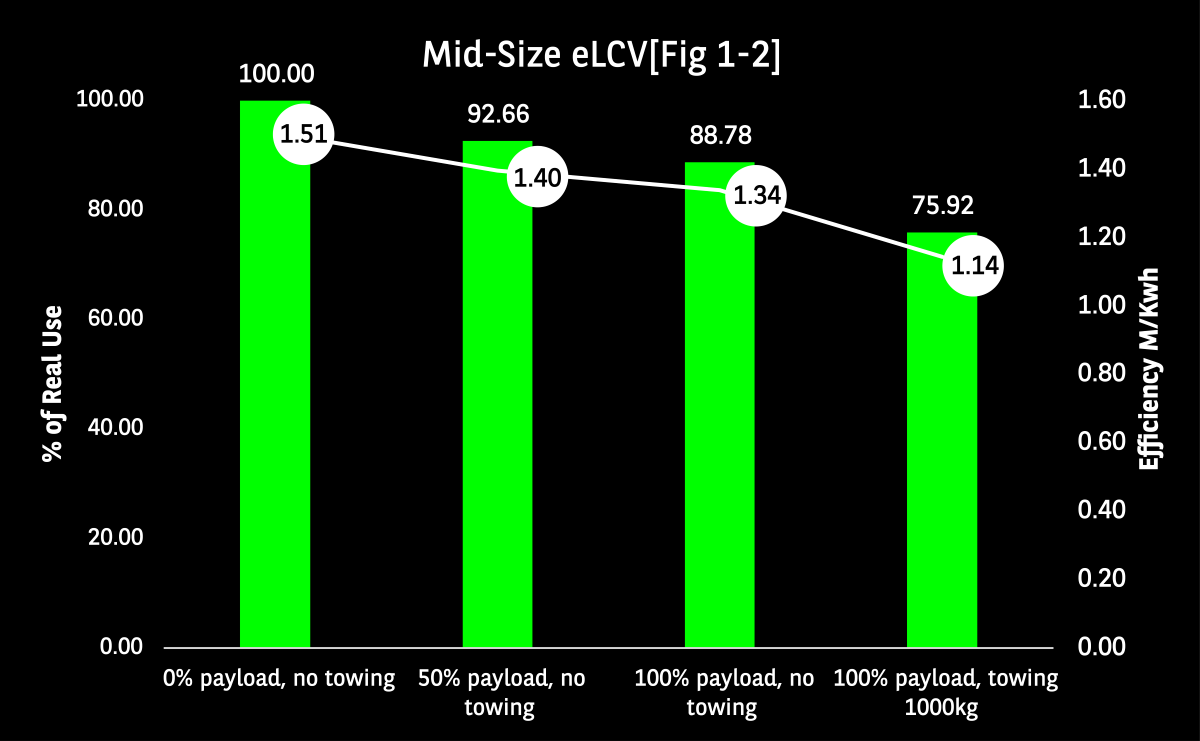NEW scientific research from sustainable mobility specialist Arval UK has revealed towing will reduce an electric vehicle’s range by 23-31% against the real-world figure.
Data published in the latest ‘Electric Vehicles Revealed’ report empowers fleets and businesses with the accurate information they need to make informed decision about the most suitable roles / tasks for electric vans and cars.
Alongside the towing data, the report also provides up-to-date insight into the impact of payload on electric Light Commercial Vehicles (LCVs).
For mid-size electric vans, a half load resulted in a dip of 7% against the real-world range and an 11% dip with a full load. Add in towing and the range was 24% lower than the unladen real-world maximum. These drops represent a 14% drop between fully loaded and fully loaded plus towing.
For large electric vans, the half-load figure recorded was an 11% drop, for a full load 14% and when towing the range was 31% lower than the real-world maximum. Moving from full loaded to fully loaded plus towing equates to a 20% drop in range.
In Arval UK’s testing the car saw a 23% fall in electric range when towing.
By comparison, for diesel vans, Arval’s experts use a degradation in fuel efficiency of 15% when towing, against a van that’s at 100% payload.
Report contributor and Arval UK’s LCV Consultant, Simon Cook, said: “For commercial vehicles, which typically tow while also carrying a full load, the research found range was reduced by between a quarter and a third over the real-use figure.
“What does this mean in reality? If your fully-charged van range is typically 120 miles unladen, then you’re looking at a 83-91 mile maximum while towing. If you’re already operating on the basis of a range while at 100% payload and a range of 105 miles, then the impact of towing will be a 14-22 mile decrease.”
With the Government’s initial target for new electric vehicles sales set at 22% for cars and vans in 2024, knowing which roles electric vans are suitable for is vital. While company cars are incentivised through attractive benefit-in-kind rates, electric company vans have relatively little Government support.
Cook added: “Electric vehicles are very good for the act of towing – their smooth and instant power delivery really helps. However, the range and charging infrastructure mean electric vans won’t work for all businesses’ needs at this point in time. Arval’s data empowers fleet managers and corporations to work out which jobs electric vans can do now. It also shows that when upcoming new longer-range electric vans are available, how these could be used by businesses.
“Solving the BEV adoption hurdles in the wider LCV market may need some significant work, but in all but a couple of areas progress is being made,” said Cook.
“Van ranges in the small and medium sectors are improving rapidly. Charging infrastructure is seeing significant investment. There are however still difficulties surrounding larger eLCVs that cover higher mileages.”
The second in the ‘Electric Vehicles Revealed’ report series highlights that the biggest nettle to grasp is by businesses that operate larger LCVs over higher mileages.
The report points out these fleets may need to look at their entire transport and logistics business model. Disruption in this area could provide a solution perhaps through more vehicles and more localised operations. However, the immediate impact of such a move is currently a significant increase in costs.
The electric van research was carried out at UATC’s Millbrook Proving Ground in Bedfordshire. Testing was identical and carried out on a dynamometer to accurately and consistently replicate real use driving with differing states of load and while towing a 500kg trailer. Mimicking what happens in the real world, but in repeatable laboratory conditions provides a real-world figure for range and efficiency.










